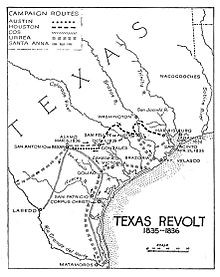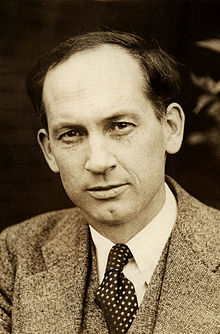Portal:North America
The North America Portal

North America is a continent in the Northern and Western Hemispheres. North America is bordered to the north by the Arctic Ocean, to the east by the Atlantic Ocean, to the southeast by South America and the Caribbean Sea, and to the west and south by the Pacific Ocean. The region includes the Bahamas, Bermuda, Canada, the Caribbean, Central America, Clipperton Island, Greenland, Mexico, Saint Pierre and Miquelon, Turks and Caicos Islands, and the United States.
North America covers an area of about 24,709,000 square kilometers (9,540,000 square miles), representing approximately 16.5% of the Earth's land area and 4.8% of its total surface area. It is the third-largest continent by size after Asia and Africa, and the fourth-largest continent by population after Asia, Africa, and Europe. , North America's population was estimated as over 592 million people in 23 independent states, or about 7.5% of the world's population. In human geography, the terms "North America" and "North American" sometimes refer to just Canada, the United States, Mexico, and Greenland.
It is unknown with certainty how and when first human populations first reached North America. People were known to live in the Americas at least 20,000 years ago, but various evidence points to possibly earlier dates. The Paleo-Indian period in North America followed the Last Glacial Period, and lasted until about 10,000 years ago when the Archaic period began. The classic stage followed the Archaic period, and lasted from approximately the 6th to 13th centuries. Beginning in 1000 AD, the Norse were the first Europeans to begin exploring and ultimately colonizing areas of North America.
In 1492, the exploratory voyages of Christopher Columbus led to a transatlantic exchange, including migrations of European settlers during the Age of Discovery and the early modern period. Present-day cultural and ethnic patterns reflect interactions between European colonists, indigenous peoples, enslaved Africans, immigrants from Europe, Asia, and descendants of these respective groups. (Full article...)
The Texas Revolution (October 2, 1835 – April 21, 1836) was a rebellion of colonists from the United States and Tejanos (Hispanic Texans) against the centralist government of Mexico in the Mexican state of Coahuila y Tejas. Although the uprising was part of a larger one, the Mexican Federalist War, that included other provinces opposed to the regime of President Antonio López de Santa Anna, the Mexican government believed the United States had instigated the Texas insurrection with the goal of annexation. The Mexican Congress passed the Tornel Decree, declaring that any foreigners fighting against Mexican troops "will be deemed pirates and dealt with as such, being citizens of no nation presently at war with the Republic and fighting under no recognized flag". Only the province of Texas succeeded in breaking with Mexico, establishing the Republic of Texas. It was eventually annexed by the United States.
The revolution began in October 1835, after a decade of political and cultural clashes between the Mexican government and the increasingly large population of Anglo-American settlers in Texas. The Mexican government had become increasingly centralized and the rights of its citizens had become increasingly curtailed, particularly regarding immigration from the United States. Mexico had officially abolished slavery in Texas in 1829, and the desire of Anglo Texans to maintain the institution of chattel slavery in Texas was also a major cause of secession. Colonists and Tejanos disagreed on whether the ultimate goal was independence or a return to the Mexican Constitution of 1824. While delegates at the Consultation (provisional government) debated the war's motives, Texians and a flood of volunteers from the United States defeated the small garrisons of Mexican soldiers by mid-December 1835. The Consultation declined to declare independence and installed an interim government, whose infighting led to political paralysis and a dearth of effective governance in Texas. An ill-conceived proposal to invade Matamoros siphoned much-needed volunteers and provisions from the fledgling Texian Army. In March 1836, a second political convention declared independence and appointed leadership for the new Republic of Texas. (Full article...)
Harold Adams Innis FRSC (November 5, 1894 – November 8, 1952) was a Canadian professor of political economy at the University of Toronto and the author of seminal works on media, communication theory, and Canadian economic history. He helped develop the staples thesis, which holds that Canada's culture, political history, and economy have been decisively influenced by the exploitation and export of a series of "staples" such as fur, fish, lumber, wheat, mined metals, and coal. The staple thesis dominated economic history in Canada from the 1930s to 1960s, and continues to be a fundamental part of the Canadian political economic tradition.
Innis's writings on communication explore the role of media in shaping the culture and development of civilizations. He argued, for example, that a balance between oral and written forms of communication contributed to the flourishing of Greek civilization in the 5th century BC. He warned, however, that Western civilization is now imperiled by powerful, advertising-driven media obsessed by "present-mindedness" and the "continuous, systematic, ruthless destruction of elements of permanence essential to cultural activity." His intellectual bond with Eric A. Havelock formed the foundations of the Toronto School of communication theory, which provided a source of inspiration for future members of the school Marshall McLuhan and Edmund Snow Carpenter. (Full article...)Man o' War (March 29, 1917 – November 1, 1947) was an American Thoroughbred racehorse who is widely regarded as one of the greatest racehorses of all time. Several sports publications, including The Blood-Horse, Sports Illustrated, and the Associated Press, voted Man o' War as the best American racehorse of the 20th century. During his racing career, just after World War I, Man o' War won 20 of 21 races and $249,465 (equivalent to $3,794,000 in 2023) in purses. He was the unofficial 1920 American horse of the year and was honored with Babe Ruth as the outstanding athlete of the year by The New York Times. He was inducted into the National Museum of Racing and Hall of Fame in 1957. On March 29, 2017, the museum opened a special exhibit in his honor, "Man o' War at 100".
In 1919, Man o' War won 9 of 10 starts, including the Hopeful Stakes and Belmont Futurity, then the most important races for two-year-old horses in the United States. His only loss came at Saratoga Race Course, later nicknamed the Graveyard of Champions, where he lost by a neck to a colt fittingly named Upset. (Full article...)Did you know...
- ... that Confederate General John W. Frazer surrendered the Cumberland Gap during the American Civil War without a fight?
- ...that Castillo de los Tres Reyes Magos del Morro (pictured), a fortress which guards the entrance to Havana bay in Havana, was named after the biblical Magi?
- ...that the French West Indies refers to the two French overseas departments of Guadeloupe and Martinique, and also includes the Guadeloupean dependencies of French St. Martin, Saint-Barthélemy, Les Saintes, Marie-Galante and La Désirade?
- ... that the Chontal Maya of Tabasco consider themselves the direct descendants of the Olmec civilization?
- ...that Jacob Piatt Dunn in 1886 wrote the first scholarly history concerning the Indian Wars?
Selected panorama

Topics
Categories
List articles
Related portals
Northern America
Central America
Caribbean
WikiProjects
 North America
North America-
 Canada
Canada -
 Greenland
Greenland -
 Mexico
Mexico -
 Saint Pierre and Miquelon
Saint Pierre and Miquelon -
 United States
United States  Central America
Central America-
 Belize
Belize -
 Costa Rica
Costa Rica -
 El Salvador
El Salvador -
 Guatemala
Guatemala -
 Honduras
Honduras -
 Nicaragua
Nicaragua -
 Panama
Panama  Mesoamerica
Mesoamerica Caribbean
Caribbean-
 Antigua and Barbuda
Antigua and Barbuda -
 Bahamas
Bahamas -
 Barbados
Barbados -
 Bermuda
Bermuda -
 Cuba
Cuba -
 Dominica
Dominica -
 Dominican Republic
Dominican Republic -
 Grenada
Grenada -
 Haiti
Haiti -
 Jamaica
Jamaica -
 Puerto Rico
Puerto Rico -
 Saint Kitts and Nevis
Saint Kitts and Nevis -
 Saint Lucia
Saint Lucia -
 Saint Vincent and the Grenadines
Saint Vincent and the Grenadines -
 Trinidad and Tobago
Trinidad and Tobago
Associated Wikimedia
The following Wikimedia Foundation sister projects provide more on this subject:
-
Commons
Free media repository -
Wikibooks
Free textbooks and manuals -
Wikidata
Free knowledge base -
Wikinews
Free-content news -
Wikiquote
Collection of quotations -
Wikisource
Free-content library -
Wikiversity
Free learning tools -
Wikivoyage
Free travel guide -
Wiktionary
Dictionary and thesaurus




























